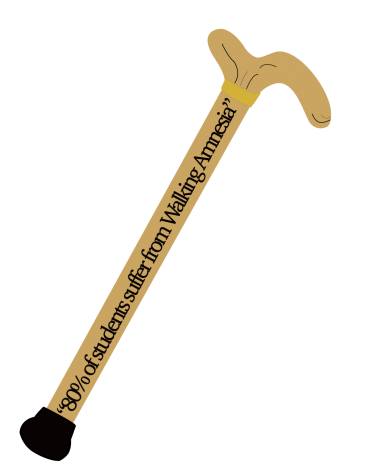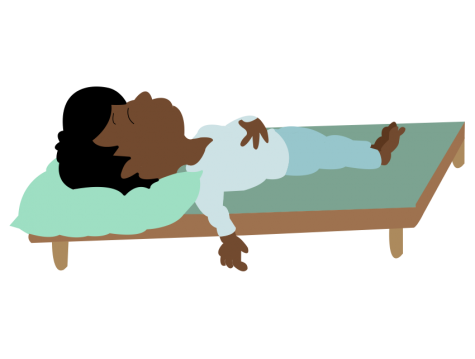A roll a day keeps the doctor away
A new condition renders students oblivious to walking.
Allison Wilson ’22 yawns as she wakes up from her 37-minute nap and leaves her sixth-period Zoom call. She sighs in relief and debates what to eat during her 15-minute break. Her parents remind her to “move around”, so she groans and reluctantly forces herself to roll to the other side of the bed: exercise for the day complete.
She triumphantly logs the progress onto her new app, “One Roll A Day”, which was recommended to her by her COVID-19 mobility therapist. The app requires the user to roll at least once a day in order to continue using social media and delivery apps. She smiles in relief as Instagram, Facebook, Food to You, and Zoom Eats reappear on her screen.
 Wilson is just one of the millions of students who have been diagnosed with Walking Amnesia, a condition that has rendered students oblivious to the concept of walking as a result of remote learning and COVID-19. A record high of 80% of students now suffer from this condition, and it is only getting worse. COVID-19 mobility therapists have been swamped with work as they attempt to help these students move from one place to another.
Wilson is just one of the millions of students who have been diagnosed with Walking Amnesia, a condition that has rendered students oblivious to the concept of walking as a result of remote learning and COVID-19. A record high of 80% of students now suffer from this condition, and it is only getting worse. COVID-19 mobility therapists have been swamped with work as they attempt to help these students move from one place to another.
“They seem to completely have forgotten the concept of moving around as they only use their arms to eat and log on or off of Zoom,” Dr. William Johnson said.
As a result of this new condition, millions of jobs have been created, most notably being mobility therapists, who research and help students recover. Mobility therapists around the world are mystified by the surge in Walking Amnesia patients, and many have begun to push rolling as an adequate substitute.
“We have actually found that rolling is more efficient being an average of 2 mph faster, because student’s muscles seem to have adapted to laying down,” Johnson said. “In addition, the students seem to still be familiar with the concept of rolling.”
However, students seem to oppose this new form of movement, as many are reluctant to move at all. After more than a year of remote learning, they have grown accustomed to staying in their beds all day without needing to move.
“It’s so difficult, I mean where would I even need to go? Like the store? We have Zoom Eats now,” Wilson said. “We Zoom everywhere now.”
Contrary to their childrens’ beliefs, parents are extremely opposed to this new form of living in general, following the common dissent that their children are online too much. Many have even created or participated in protests, where they rallied against Zoom and remote learning’s impact on their children’s mobility.
 “Look at this new generation, always on their phones,” parent John Brown said, “When I was young, I actually had to run to school, walk to classes, and sit at desks. Now the new generation is just reaching for some brain-destroying technology”
“Look at this new generation, always on their phones,” parent John Brown said, “When I was young, I actually had to run to school, walk to classes, and sit at desks. Now the new generation is just reaching for some brain-destroying technology”
As a result of this dissatisfaction, many parents are calling for a complete revival of walking, believing it to be the only form of efficient travel. However, mobility therapists are still pushing the agenda of rolling as the new age of transportation, while students don’t understand the necessity of moving at all.
As the pandemic continues, more and more professionals, families and students are at war with each other regarding the future of transportation. Multiple debates have ensued discussing this very topic.
“Honestly, I’m tired of this debate thing,” Wilson said. “Why don’t we just sleep it off?”


